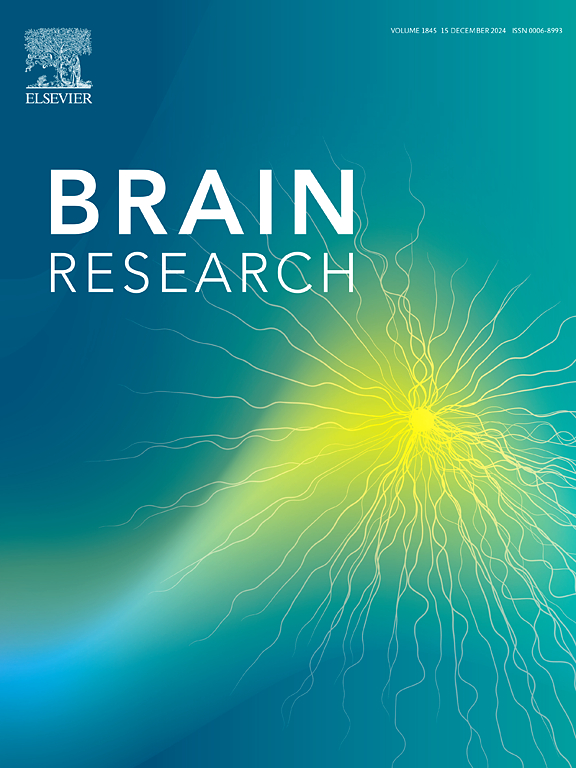Construction of brain age models based on structural and white matter information
IF 2.7
4区 医学
Q3 NEUROSCIENCES
引用次数: 0
Abstract
Brain aging is an inevitable process in adulthood, yet there is a lack of objective measures to accurately assess its extent. This study aims to develop brain age prediction model using magnetic resonance imaging (MRI), which includes structural information of gray matter and integrity information of white matter microstructure. Multiparameter MRI was performed on two population cohorts. We collected structural MRI data from T1- and T2-sequences, including gray matter volume, surface area, and thickness in different areas. For diffusion tensor imaging (DTI), we derived four white matter parameters: fractional anisotropy, mean diffusivity, axial diffusivity, and radial diffusivity. To achieve reliable brain age prediction based on structure and white matter integrity, we employed LASSO regression. We successfully constructed a brain age prediction model based on multiparameter brain MRI (Mean absolute error of 3.87). Using structural and diffusion metrics, we identified and visualized which brain areas were notably involved in brain aging. Simultaneously, we discovered that lateralization during brain aging is a significant factor in brain aging models. We have successfully developed a brain age estimation model utilizing white matter and gray matter metrics, which exhibits minimal errors and is suitable for adults.

基于结构和白质信息的脑年龄模型构建。
大脑衰老是成年人不可避免的过程,但缺乏客观的措施来准确评估其程度。本研究旨在建立基于脑灰质结构信息和脑白质微结构完整性信息的磁共振成像(MRI)脑年龄预测模型。对两组人群进行多参数MRI检查。我们收集了T1和t2序列的结构MRI数据,包括不同区域的灰质体积、表面积和厚度。对于扩散张量成像(DTI),我们导出了四个白质参数:分数各向异性、平均扩散率、轴向扩散率和径向扩散率。为了基于结构和白质完整性实现可靠的脑年龄预测,我们采用LASSO回归。我们成功构建了基于多参数脑MRI的脑年龄预测模型(平均绝对误差为3.87)。利用结构和扩散指标,我们确定并可视化了哪些大脑区域与大脑衰老有关。同时,我们发现脑老化过程中的侧化是脑老化模型中的重要因素。我们成功地开发了一种利用白质和灰质度量的脑年龄估计模型,该模型误差最小,适用于成年人。
本文章由计算机程序翻译,如有差异,请以英文原文为准。
求助全文
约1分钟内获得全文
求助全文
来源期刊

Brain Research
医学-神经科学
CiteScore
5.90
自引率
3.40%
发文量
268
审稿时长
47 days
期刊介绍:
An international multidisciplinary journal devoted to fundamental research in the brain sciences.
Brain Research publishes papers reporting interdisciplinary investigations of nervous system structure and function that are of general interest to the international community of neuroscientists. As is evident from the journals name, its scope is broad, ranging from cellular and molecular studies through systems neuroscience, cognition and disease. Invited reviews are also published; suggestions for and inquiries about potential reviews are welcomed.
With the appearance of the final issue of the 2011 subscription, Vol. 67/1-2 (24 June 2011), Brain Research Reviews has ceased publication as a distinct journal separate from Brain Research. Review articles accepted for Brain Research are now published in that journal.
 求助内容:
求助内容: 应助结果提醒方式:
应助结果提醒方式:


